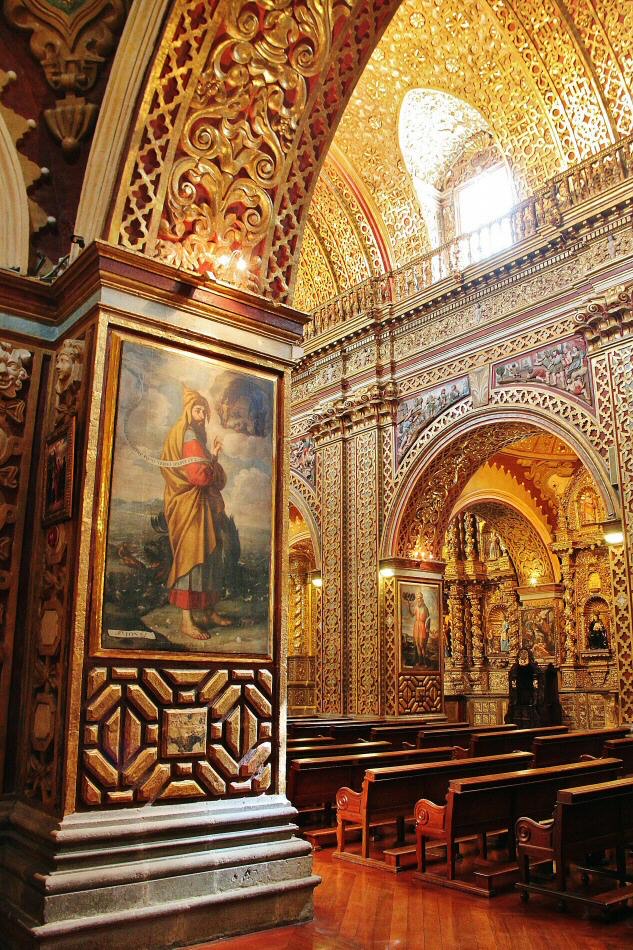Nicolás Javier de Goríbar (1666–1740), conocido como Goríbar, fue uno de los pintores más importantes de la Escuela Quiteña, discípulo y pariente de Miguel de Santiago. Nacido en Quito, se formó en el taller de su maestro, con quien colaboró en varias obras, y más tarde desarrolló un estilo propio enfocado en temas bíblicos, especialmente en la representación de profetas y reyes del Antiguo Testamento. Su vínculo con la orden jesuita y con el santuario de Guápulo marcó gran parte de su trayectoria, convirtiéndose en un artista central para la decoración de iglesias y conventos de la Real Audiencia de Quito.
Entre sus obras más célebres destacan la serie Los Profetas, realizada para la Iglesia de La Compañía de Jesús tras su reconstrucción, y Los Reyes de Judá, pintados para el refectorio de Santo Domingo. También realizó el monumental lienzo de la Asunción de la Virgen en el retablo de Guápulo, concluido en 1718, considerado una de las cumbres del barroco quiteño. Más adelante, en 1733, trabajó en el convento de San Francisco y elaboró un importante grabado de la Provincia Jesuita de Quito. Su obra, amplia y profundamente religiosa, consolidó el legado artístico de su maestro Miguel de Santiago y dejó una huella perdurable en el arte colonial ecuatoriano.

Nicolás Javier de Goríbar (1666–1740), known as Goríbar, was one of the most important painters of the Quito School, a disciple and relative of Miguel de Santiago. Born in Quito, he trained in his master’s workshop, with whom he collaborated on several works, and later developed his own style focused on biblical themes, especially the depiction of prophets and kings from the Old Testament. His ties to the Jesuit order and the Guápulo sanctuary influenced much of his career, becoming a central artist in the decoration of churches and convents of the Royal Audience of Quito.
His most famous works include the series The Prophets, created for the Church of the Society of Jesus after its reconstruction, and The Kings of Judah, painted for the refectory of Santo Domingo. He also created the monumental canvas of the Assumption of the Virgin in the Guápulo altarpiece, completed in 1718, considered one of the pinnacles of Quito Baroque. Later, in 1733, he worked at the Convent of San Francisco and produced an important engraving of the Jesuit Province of Quito. His extensive and deeply religious work consolidated the artistic legacy of his mentor Miguel de Santiago and left a lasting mark on Ecuadorian colonial art.
